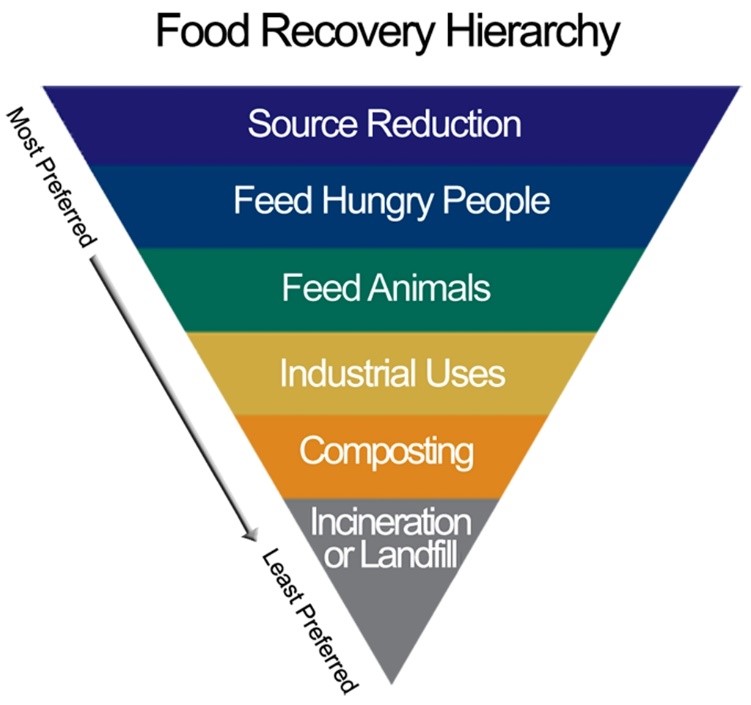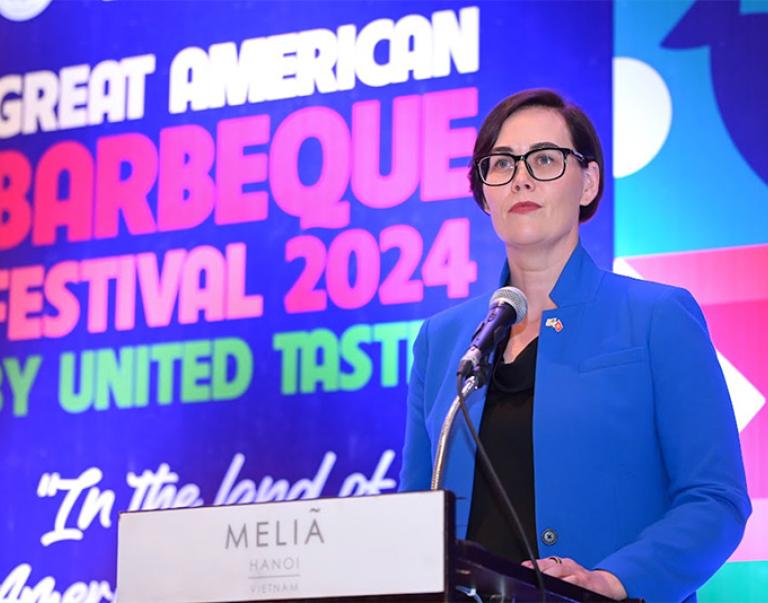Food Waste FAQs

1. How much food waste is there in the United States?
In the United States, food waste is estimated at between 30-40 percent of the food supply. This estimate, based on estimates from USDA’s Economic Research Service of 31 percent food loss at the retail and consumer levels, corresponded to approximately 133 billion pounds and $161 billion worth of food in 2010. This amount of waste has far-reaching impacts on society:
- Wholesome food that could have helped feed families in need is sent to landfills.
- Land, water, labor, energy and other inputs are used in producing, processing, transporting, preparing, storing, and disposing of discarded food.
2. What causes food loss and waste?
Food loss occurs for many reasons, with some types of loss—such as spoilage—occurring at every stage of the production and supply chain. Between the farm gate and retail stages, food loss can arise from problems during drying, milling, transporting, or processing that expose food to damage by insects, rodents, birds, molds, and bacteria. At the retail level, equipment malfunction (such as faulty cold storage), over-ordering, and culling of blemished produce can result in food loss. Consumers also contribute to food loss when they buy or cook more than they need and choose to throw out the extras (See Buzby et al (2014)).
3. Does the U.S. have a goal to reduce food loss and waste?
In 2015, the USDA joined with the U.S. Environmental Protection Agency to set a goal to cut our nation’s food waste by 50 percent by the year 2030.
4. What baseline estimates of food loss and waste will be used to measure progress in reaching the 50 percent reduction goal?
The United States currently does not have a single baseline estimate of food loss and waste. Instead, two very different measures describe the amount of food loss and waste in the United States:
- EPA estimates: 2010 was selected as a baseline at 218.9 pounds of food waste per person sent for disposal. The 2030 FLW reduction goal aims to reduce food waste going to landfills by 50 percent to 109.4 pounds per person.
- USDA estimates: amount of food loss and waste from the food supply at the retail and consumer levels: in 2010 food loss and waste at the retail and consumer levels was 31 percent of the food supply, equaling 133 billion pounds and almost $162 billion.
Neither estimate provides a comprehensive evaluation of food loss and waste in the United States. However, reductions in both these estimates will provide evidence of progress in reducing food loss and waste and the serious environmental impacts associated with landfilling food. A variety of other data collection efforts across the country will help provide information on other segments of the supply chain.
5. How is food loss and waste defined in the context of the U.S. reduction goal?
USDA’s Economic Research Service (ERS) defines food loss as the edible amount of food, postharvest, that is available for human consumption but is not consumed for any reason. It includes cooking loss and natural shrinkage (for example, moisture loss); loss from mold, pests, or inadequate climate control; and food waste. For the reduction goal, USDA is adopting the convention of using the general term “food loss and waste” to describe reductions in edible food mass anywhere along the food chain. In some of the statistics and activities surrounding recycling, the term “waste” is stretched to include non-edible (by humans) parts of food such as banana peels, bones, and egg shells.
6. What are some ways to reduce food loss and waste?
The best approach to reducing food loss and waste is not to create it in the first place. Waste can be avoided by improving product development, storage, shopping/ordering, marketing, labeling, and cooking methods. If excess food is unavoidable, recover it to donate to hunger-relief organizations so that they can feed people in need. Inedible food can be recycled into other products such as animal feed, compost and worm castings, bioenergy, bioplastics and clothing.
USDA and EPA created the food recovery hierarchy to show the most effective ways to address food waste.
For more on the hierarchy, visit EPA’s Food Recovery Hierarchy website.
7. What is the U.S. Food Loss and Waste 2030 Champion program?
Launched by USDA and EPA in 2016, U.S. Food Loss and Waste 2030 Champions are businesses and organizations that have made a public commitment to reduce food loss and waste in their own operations in the United States by 50 percent by the year 2030. Note: The U.S. Food Waste Challenge group has been retired. Companies and organizations that had joined the Food Waste Challenge are encouraged to become U.S. Food Loss and Waste 2030 Champions.
8. How does a company become a U.S. Food Loss and Waste 2030 Champion?
To join the U.S. Food Loss and Waste 2030 Champions, organizations complete and submit the 2030 Champions form (PDF, 472 KB), in which they commit to reduce food loss and waste in their own operations and periodically report their progress on their website.
9. Does USDA or EPA verify the Champions’ food loss and waste reduction estimates?
The exact definition of food loss and waste could vary by country, business and consumer. U.S. Food Loss and Waste 2030 Champions are encouraged to consult the Food Loss and Waste Protocol for information on defining and transparently measuring food loss and waste. It is at the Champion’s discretion whether to calculate the 50 percent reduction on an absolute or per customer/consumer basis.
10. What is the EPA's Food Recovery Challenge?
EPA’s Food Recovery Challenge offers participants access to data management software and technical assistance to help them quantify and improve their sustainable food management practices. Participants enter goals and report food waste diversion data annually into EPA’s data management system. They then receive an annual climate profile report that translates their food diversion data results into greenhouse gas reductions as well as other measures such as “cars off the road” to help participants communicate the benefits of activities implemented. EPA provides on-going technical assistance to EPA’s Food Recovery Challenge participants to encourage continuous improvement.
Businesses that are not ready to make the 50-percent reduction commitment but are engaged in efforts to reduce food loss and waste in their operations can be recognized for their efforts by joining the Food Recovery Challenge.
U.S. Food Loss and Waste 2030 Champions can also join EPA’s Food Recovery Challenge to access technical assistance for measuring food waste and assessing the positive environmental benefits of waste reduction.




